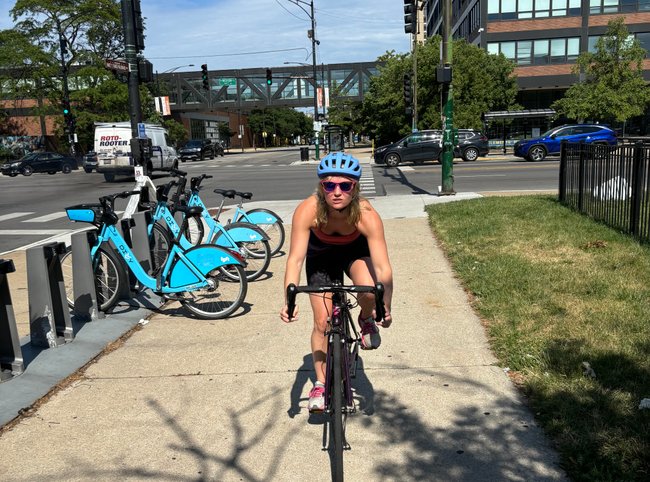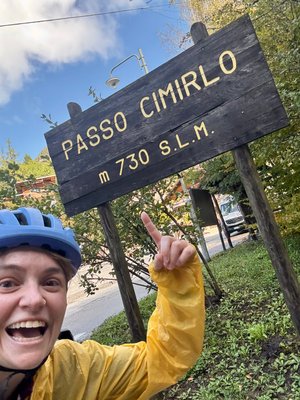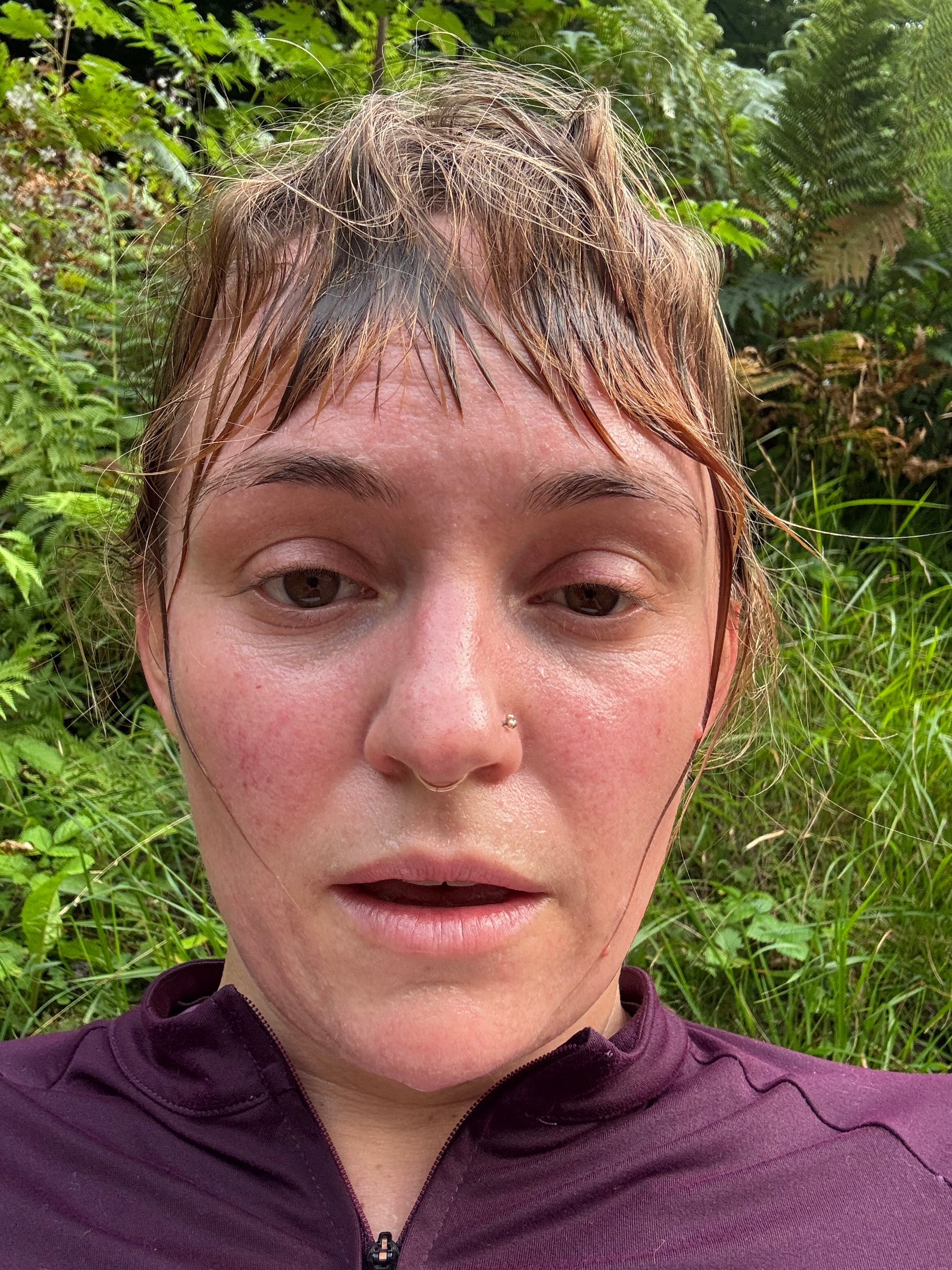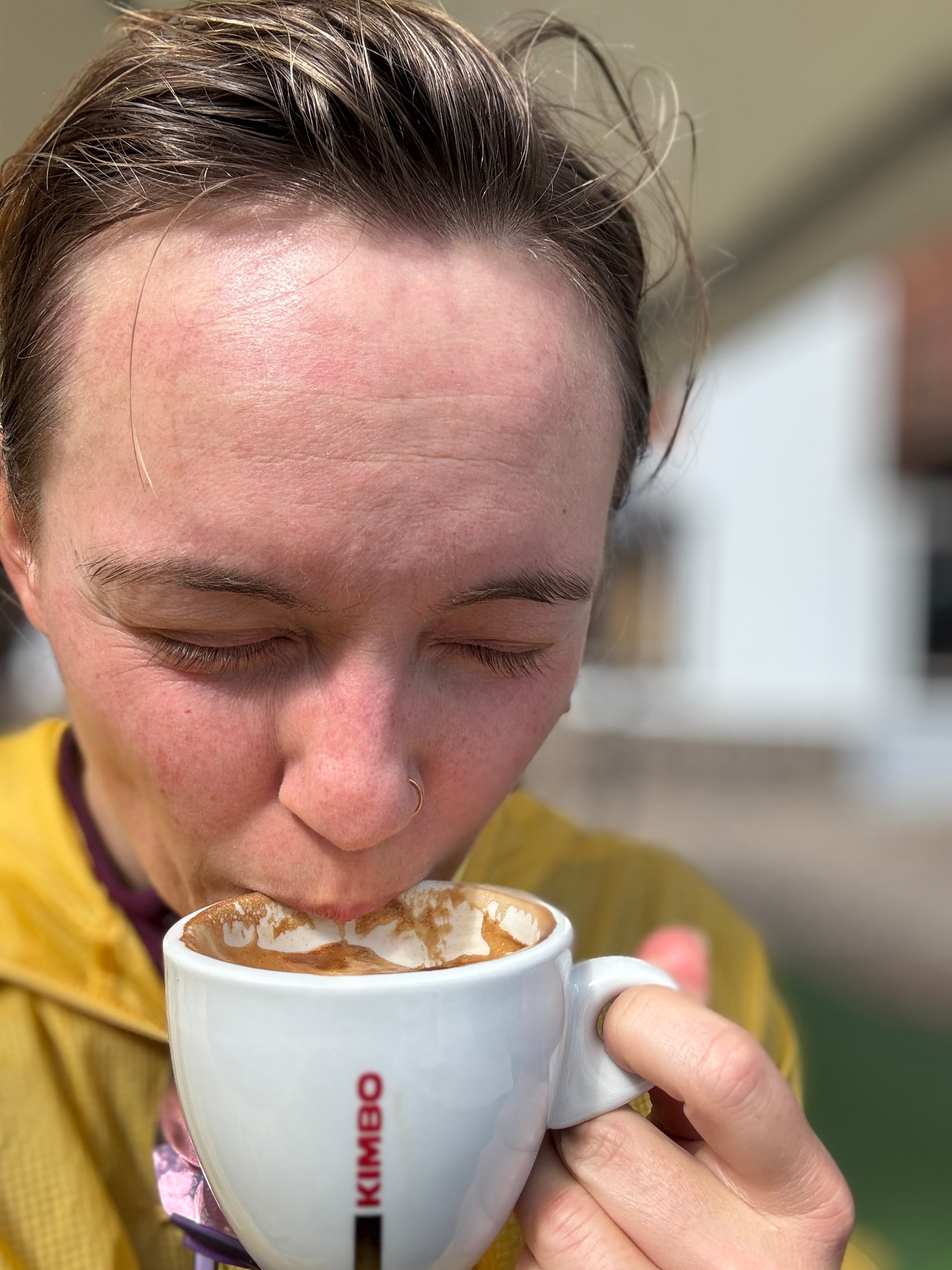I can’t tell you how excited I was to start biking in the mountains! I picked up cycling a few years ago after my knees decided they were done with running. It started with indoor cycling classes, and after watching my second Tour de France, I finally bought my first real bike. You could say I was ready to go fast. Back in the Midwest, David and I loved long rides on flat roads, gradually building our mileage and intensity.

When we decided to move to Italy, we shipped our bikes over — after a little cost analysis, it turned out much cheaper than buying new ones here. Cue the excitement: our first ride in Trento, rolling those babies out onto smooth mountain roads, surrounded by views straight out of a postcard. Drivers actually respect cyclists here, and for the first time ever, I felt safe riding.
David planned our first cycling route. It was… let’s just say a little ambitious for our first ride in the Alps. At that point, I had no clue what it felt like to bike up a mountain. I thought, how bad could it be?
Welllll, let’s just say I didn’t even make it a quarter of the way before I started crying and turned around. In that moment, I was truly, unbelievably humbled. Or as cyclists would put it: I did not have the legs. I couldn’t imagine a world where I’d ever finish that route.

Two Months Later
Fast-forward two months, and I can honestly say — it does get better.
Getting humbled by the mountains over and over again somehow… pays off. Don’t get me wrong —two months in, I still want to cry on every climb, but now I don’t. I just grimace my way up because I know I can make it.
We haven’t done anything crazy yet. From our apartment, it’s about 3.2 km (2 miles) to the top of Cimirlo Pass, with an elevation gain of roughly 330 m (1,000 feet). It’s become our go-to climb. But even sticking to local climbs, we’re already leaps and bounds ahead of where we were that first day.

So, as someone who had never biked up a mountain before, here’s what I’ve learned:
- Elevation is no joke.
400 meters feels like Everest at first. It gets easier, but your quads will never forget that first climb… or the next… or the next. - Suitable gearing is your best friend.
Learn to love your easiest gear. Our bikes were set up for the Midwestern flats and my lightest gear, 34:28, wasn’t cutting it. Getting a new cassette with 34 teeth on the largest cog was the best decision ever. For now! - Clipping in uphill is different.
On flat land, clipping in feels natural — you can roll forward while you settle in. On a slope, though, it’s a different story. Getting one shoe clipped while balancing on a steep incline feels like a circus act (one I still haven’t mastered).
So, make sure wherever you stop is flat enough to get a little momentum when you start again. In other words, plan your stops strategically if you can — it’ll save you from a lot of awkward wobbles (and maybe a few bruises). - If you’re going up a super steep part slowly, DO NOT STOP PEDALLING.
At least not until you’ve unclipped. I’ve learned this the hard way more often than I’d like to admit. Unlike on flat land, when you stop pedaling uphill, your wheels stop immediately — and that “oh no” moment happens fast. And then… down you go. Whoopsie. - Hydration and sunscreen matter.
Mountain climbs are deceiving — the slower pace means more time in the sun, and trust me, no sunscreen = very red biker “tans.” (David can confirm this from experience.)
Also, don’t trust Google Maps too much. If it says the route takes 20 minutes but it’s several miles uphill, just know that in the beginning it might take you closer to one — or even two — hours. - Pace yourself early.
The initial “this doesn’t seem so bad” part of a climb is a trap. I made the mistake of choosing steeper-but-shorter routes, only to burn out halfway. When I finally tried longer, more gradual climbs, I actually made it to the top of the pass without stopping — and it felt amazing. But hopefully, with a little more time, I’ll be able to do those super-steep routes with no problem! - Descending is its own skill.
It’s fun, but terrifying when you first start out. Go slow and steady, and remember — it’s not a race (at least not for us!).
If you can, go for disc brakes. My little bike can only fit rim brakes and let’s just say my downhill experience is not as smooth and relaxed as David’s. Sure, rim brakes will do the job, but it’s a grind (pun intended). - Celebrate the small wins.
Every extra meter of elevation counts. Seriously — it’s all progress. And yes, I fully believe a post-ride gelato or espresso is part of the training plan. I didn’t move to Italy for nothing! - Your mindset matters more than your legs.
There’s something oddly therapeutic about pushing through the pain and believing in yourself. When I switched from an “I can’t” to an “I can” mindset, it completely changed how I rode.
The mountain doesn’t get easier — you just get stronger.
If I had given up that first day, when I felt like the world’s biggest failure of a climber (because, let’s be honest, Tour de France riders make it look deceptively easy), I wouldn’t be here to tell you this:
If I can start, you can too.
Climbing is so rewarding, and honestly, I’d argue that a three-mile ride up a mountain is more satisfying than a fifty-mile ride on flat roads.
And for the record — I don’t have a fancy carbon bike for the mountains. Mine’s aluminum and weighs 12kg. Lightweight bikes cost an arm and a leg, so if that’s what’s holding you back, don’t worry. Just get the lightest gears your setup can handle and decent brakes and take on those mountains anyway.
My motto for keeping sane on the climbs: Strong, not fast.
There’s a gelato and caffè waiting for me up there ;)


Ciao for now <3
~Days







